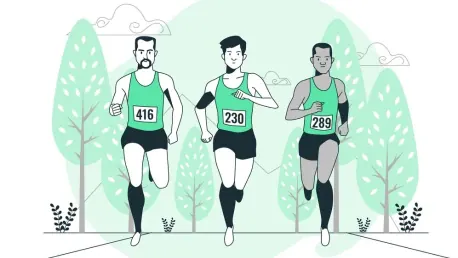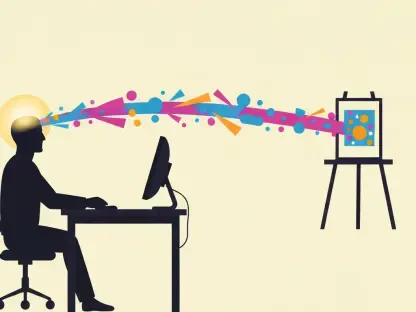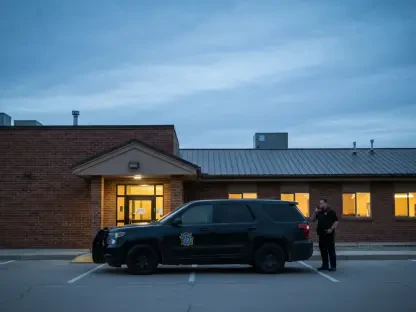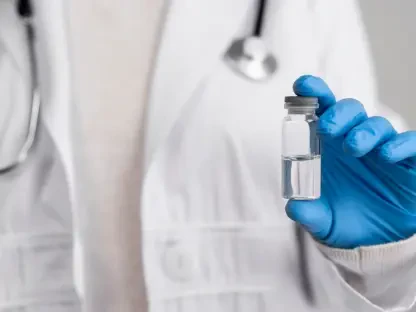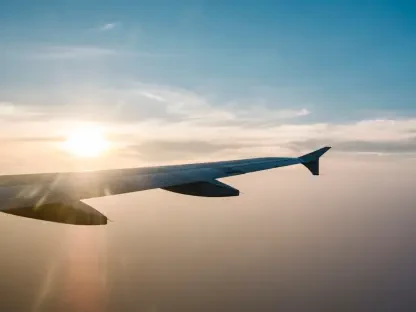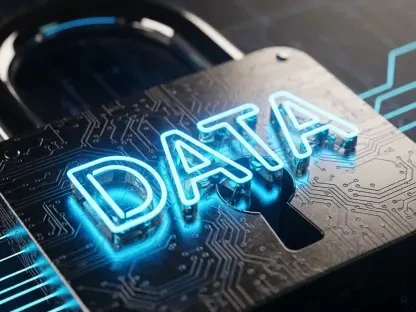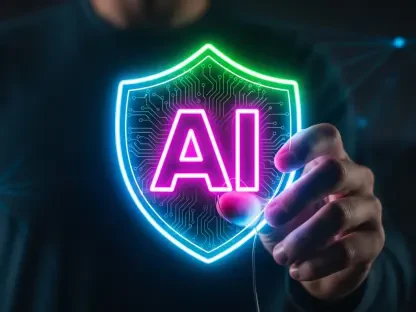Today we’re speaking with Desiree Sainthrope, a legal expert with extensive experience in drafting and analyzing trade agreements, who also has expertise in intellectual property law and the evolving implications of technologies like artificial intelligence.
Our discussion will revolve around the recent developments in NCAA policies concerning student-athlete compensation for Name, Image, and Likeness (NIL), the significance of the U.S. Supreme Court ruling, economic opportunities under the NIL model, and the implications of a proposed $2.8 billion settlement on intellectual property law.
Can you explain the significance of the U.S. Supreme Court’s 2021 ruling on the NCAA’s restrictions on compensation for student-athletes?
The Supreme Court’s 2021 ruling declared that the NCAA’s restrictions on compensation violated antitrust law. This became a landmark decision because it essentially opened the door for student-athletes to be compensated for their NIL, which was previously not allowed. This ruling disrupted the traditional model of amateurism in college sports and started a new era where athletes could monetize their personal brands.
What are the key economic opportunities available to student-athletes under the NIL model?
Under the NIL model, student-athletes can capitalize on a range of opportunities. They can endorse products, sign sponsorship deals, engage in various commercial ventures, and monetize their social media presence. For example, athletes can partner with brands, appear in advertisements, or even promote products on platforms like Instagram and YouTube, creating significant revenue streams that were not previously accessible.
What is the proposed $2.8 billion settlement about, and how might it affect student-athletes and their compensations?
The proposed $2.8 billion settlement aims to resolve antitrust allegations against the NCAA and the major conferences. If approved, the settlement would provide millions in back pay to former athletes and allow schools to distribute annual payments to athletes for their NIL rights. This settlement could lead to a more structured and lucrative environment for current and future student-athletes in terms of direct compensation.
Could you discuss the role that name, image, and likeness (NIL) rights play within intellectual property law and how they relate to the right of publicity?
NIL rights are essentially about the right of publicity, which gives individuals control over the use of their identity for commercial purposes. Within intellectual property law, when a person’s name, image, or likeness is used on products or services, it can become a trademark issue. This is relevant for athletes who now have the ability to monetize these aspects of their personal brand, giving them a broader scope of protection and control.
How can institutions now pay student-athletes directly for their NIL rights under the new model, and what implications does this have?
Institutions can now directly pay student-athletes for their NIL rights, which is a significant shift from past policies. This means that universities have a new route to offer financial incentives, which can be used in recruitment and retention of talent. This model could potentially create an uneven playing field where wealthier programs might have an advantage, leading to further changes in how college athletics are governed and managed.
What types of products and endorsements can student-athletes attach their names to under NIL deals?
Student-athletes can attach their names to a wide range of products and endorsements under NIL deals. These can include anything from athletic apparel and sneakers to more mainstream products like mobile phone services and retail memberships. Major brands such as Nike, Adidas, and Amazon have already signed deals with top athletes, reflecting the diverse opportunities now available.
How does the settlement propose to distribute payments to former athletes and current students, and what is the significance of the annual $20.5 million cap?
The settlement proposes distributing payments by providing back pay to former athletes and allowing current students to receive annual payments up to $20.5 million for their NIL rights. The $20.5 million cap is significant as it sets a limit on what can be paid out, ensuring that compensation remains within specific financial constraints and addresses concerns related to an unfair salary cap.
Can you explain the revenue-sharing model agreed upon by the NCAA and the Power Five conferences?
The revenue-sharing model agreed upon by the NCAA and the Power Five conferences allows student-athletes to receive approximately 22% of the broadcasting and marketing revenue generated by these schools. This model is set to begin in the 2025-26 academic year and aims to distribute a portion of the substantial revenue generated by college sports to the athletes, who are essential to the industry’s success.
What are some of the key objections raised against the $2.8 billion settlement, according to the Associated Press?
Key objections raised include concerns about roster limits, Title IX compliance, and the fairness of the 22% cap on payments from TV and other revenues. Critics argue that this cap is arbitrary and might not sufficiently address the antitrust issues the settlement aims to resolve. Additionally, there are concerns about how these limits might affect athletes’ earnings potential.
What is the alternative solution to the objections raised concerning the settlement, according to NCAA’s lead counsel Rakesh Kilaru?
NCAA’s lead counsel, Rakesh Kilaru, suggests that the proposed negotiations have resulted in a balanced resolution. He emphasizes that finding a universally acceptable alternative is challenging and that the current settlement aims to provide a stable and fair state moving forward. This includes continuing to allow third-party NIL payments without them counting against financial limits.
How many current and former college athletes opted out of the damages settlement classes, and what does this signify about their stance on the settlement?
According to reports, 343 current and former college athletes opted out of the settlement’s damages classes. This indicates a significant segment of athletes who may believe they can achieve better outcomes independently or disagree with the terms outlined in the settlement. It reflects the diversity of opinions on how best to address compensations and antitrust resolutions.
How might the ability for universities to directly pay athletes fundamentally change college sports, according to James Nussbaum?
James Nussbaum argues that this ability will fundamentally change college sports by introducing direct financial incentives from universities to athletes. This could shift the dynamics of recruitment, elevate the stakes of college athletics programs, and potentially widen the gap between well-funded and less-funded schools, reshaping competitive balance.
What impact might the proposed roster limits have on specific NCAA sports like football, baseball, and women’s soccer?
The proposed roster limits would significantly affect sports like football, baseball, and women’s soccer, potentially reducing the number of athletes in Division I ranks. For instance, these sports would need to collectively shed over 1,000 athletes, which could impact team depth, competitive dynamics, and opportunities for athletes in these programs.
How does the settlement address employment status and collective bargaining rights for student-athletes at public state universities?
The settlement does not directly address the employment status and collective bargaining rights for student-athletes at public state universities. However, it does push for certain benefits that resemble those from collective bargaining, like assured payments and some structured compensation models, though significant changes may still be necessary.
What are some of the likely future developments for the NCAA regarding a potential players association and its relation to collective bargaining?
The future may see the formation of an NCAA players association that, while not operating like a traditional union, would still engage in some form of collective bargaining. This could provide student-athletes with a unified platform to negotiate terms, advocate for rights, and ensure fair treatment, potentially leading to more structured governance in college sports.
Can you explain the NCAA’s decision to abandon the rule that prevented athletes from negotiating NIL deals before enrolling in a specific college?
The NCAA decided to abandon this rule to align with antitrust laws and offer more flexibility to athletes. This change means athletes can now secure deals for their NIL rights before committing to a college, which could be a significant factor in their decision-making process and enhance their overall opportunities.
What are some key aspects of the proposed settlement to be approved by a federal judge regarding the NIL recruiting ban?
Key aspects include allowing athletes to negotiate NIL deals before enrollment, setting financial caps for institutional payments, and establishing structured compensation models. These elements aim to address previous restrictions and offer a more open and equitable environment for student-athletes to monetize their personal brands.
What is the purpose of the NCAA’s settlement implementation committee, and who are the members?
The NCAA’s settlement implementation committee aims to oversee compliance with the new NIL regulations and ensure proper implementation of the settlement terms. The committee comprises 10 athletics directors and the legal and compliance teams from the conferences and the NCAA. Notable members include athletics directors from prominent universities such as Ohio State, Clemson, and Texas A&M.
What is your forecast for the NCAA and its approach to NIL in the coming years?
In the coming years, the NCAA will likely continue to adapt its approach to NIL to address legal, economic, and competitive challenges. This could include refining compensation models, enhancing regulatory compliance, and possibly establishing an official players association to facilitate collective bargaining and ensure fair treatment for student-athletes.
